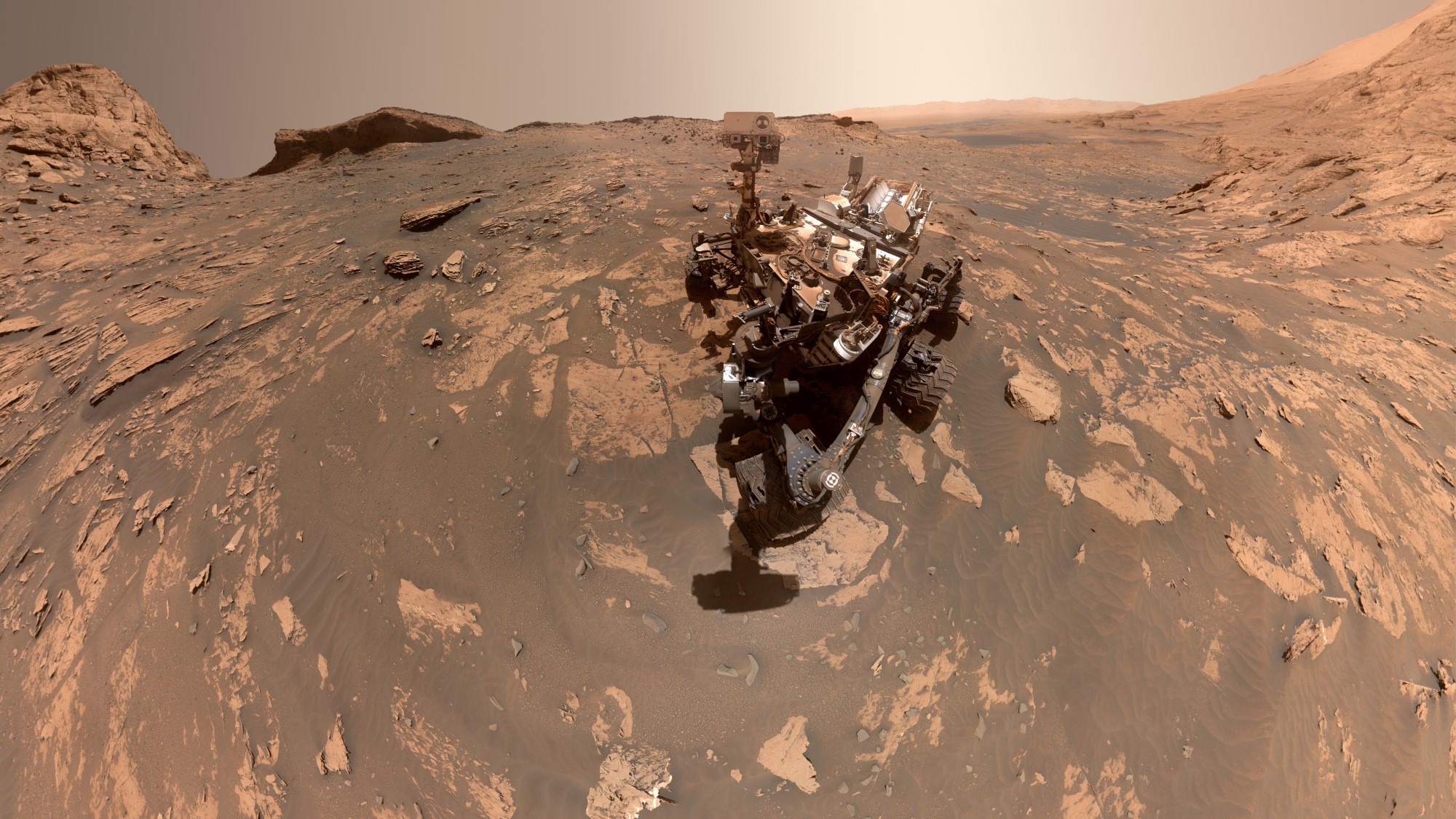Space station experiment suggests Mars rovers will need to dig deep to find life

NASA's Mars rovers shouldn't expect to detect biomarkers on the surface of the Red Planet, according to a new study based on an experiment on board the International Space Station (ISS) that suggests ultraviolet radiation will break down such molecules after just a year or two.
Both Curiosity and Perseverance utilize Raman spectrometers to identify organic compounds and, potentially, biological molecules on Mars' surface. A Raman spectrometer uses a laser to excite molecules, and then the way these excited molecules scatter light tells scientists what kind of molecules they are. In particular, they are sensitive to organic compounds, which is why they are a key tool for both rovers.
However, new research at International Space Station led by Mickael Baqué of the German Aerospace Center (DLR) has placed doubts on how useful the instruments might be on Mars. Because of its thin atmosphere and lack of magnetic shielding, Mars is deluged by a torrent of ultraviolet light from the sun, which can be harmful to biological cells.
Related: 12 amazing photos from the Perseverance rover's 1st year on Mars
Baqué's team exposed a sample of seven different types of biomolecule to Mars-like conditions for 469 days in the Biology and Mars Experiment (BIOMEX), which is installed on the Expose-R2 platform on the outside of the ISS. Temperature, daily light cycles and levels of ionizing radiation were tailored to mimic Mars, and the sample was placed among simulated Mars regolith.
The biomolecules involved in the experiment were all ones commonly found in organisms: 𝛃-carotene (which is an antioxidant and a pigment that responds to light), chlorophyllin (derived from the chlorophyll plants use to process sunlight), naringenin (a common antioxidant), quercetin (another common antioxidant), melanin (a pigment that provides protection from ultraviolet light), cellulose (a component of cell walls in plants) and chitin (found in bug skeletons).
Ordinarily, Raman spectroscopy can detect all seven of these biomolecules. However, by the end of the experiment, Baqué's team discovered that only three — chlorophyllin, quercetin and melanin — remained detectable, and even their signal had weakened by 30% to 50%. The ultraviolet light that the molecules had been exposed to had degraded them to the point that Raman spectroscopy could not recognize them.
Breaking space news, the latest updates on rocket launches, skywatching events and more!
Importantly, the technique could still detect the biomolecules from a control sample that was shielded from the radiation by deeper layers of regolith. Those detections imply that Perseverance or future rover missions could still identify biomarkers buried in the surface.
"Ultraviolet [radiation] only penetrates the first few micrometers to millimeters of the Martian surface, so organic compounds and potential biomolecules should be protected beyond these depths," Baqué told Space.com. (One micrometer is about 1% the width of a strand of hair; 1 millimeter is smaller than a grain of sand.) Dig a little deeper, and the Martian regolith should provide adequate shielding from the radiation.
Meanwhile, the European Space Agency's Rosalind Franklin ExoMars rover will take robotic drill to Mars that will be able to dig 6.6 feet (2 meters) down into the surface. That rover's launch has been delayed because a Russian lander was to deposit it on the surface, and Europe will no longer cooperate with Russia because of its invasion of Ukraine. Even facing a launch no earlier than 2028, the Rosalind Franklin rover offers our best chance of finding life on Mars since the Viking missions, scientists say.
If the Rosalind Franklin rover does find evidence for microbial life, then those microbes will have evolved in a very harsh environment.
"The Martian surface appears very deleterious to organic compounds because of ultraviolet radiation, but also [because of] oxidative substances and finally — but most importantly for long-term preservation across billions of years — ionizing radiation," Baqué said.
Intriguingly, the results differ from those of similar BIOMEX experiments that exposed intact organisms, both living and dead, to similar conditions bathed in ultraviolet radiation. Those experiments found that biomolecules within the organism remain intact. Baqué said he puts this discrepancy down to life's ability to protect its own cells.
"Just as regolith can protect directly exposed molecules from photodegradation by ultraviolet radiation, other cellular components can play the same role in organisms," he said.
The results do mean, however, that Raman spectroscopy may play a lesser role in the search for Martian life, part or present, than scientists expected. Baqué's team conclude that any biomarkers on the surface would degrade within a few years at most, meaning that unless Mars is teeming with enough life to constantly replenish such biomarkers, the surface will appear dead — which may or may not be the true picture.
The research was published Wednesday (Sept. 7) in Science Advances.
Follow Keith Cooper on Twitter @21stCenturySETI. Follow us on Twitter @Spacedotcom and on Facebook.

Keith Cooper is a freelance science journalist and editor in the United Kingdom, and has a degree in physics and astrophysics from the University of Manchester. He's the author of "The Contact Paradox: Challenging Our Assumptions in the Search for Extraterrestrial Intelligence" (Bloomsbury Sigma, 2020) and has written articles on astronomy, space, physics and astrobiology for a multitude of magazines and websites.

